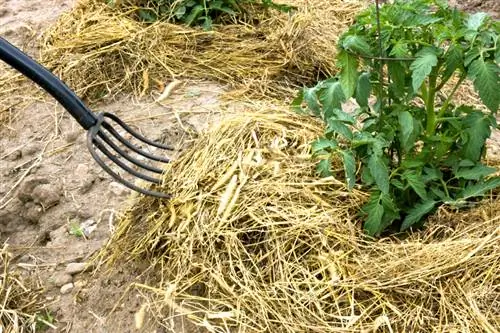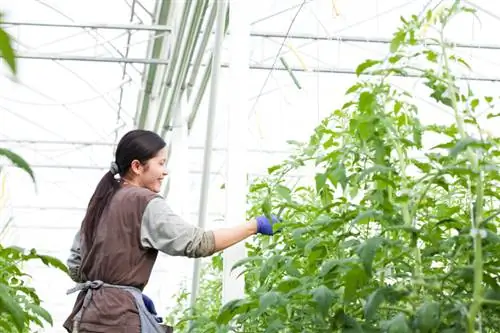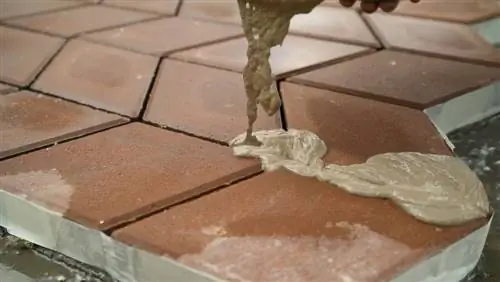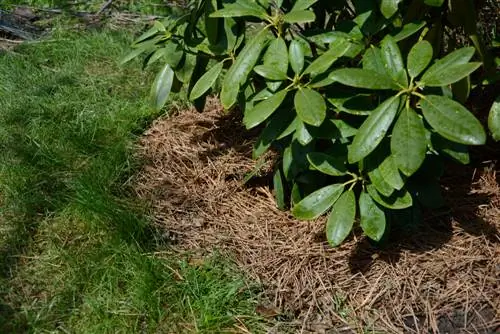- Author admin [email protected].
- Public 2023-12-16 16:46.
- Last modified 2025-01-23 11:19.
A layer of mulch vitalizes the growth of tomatoes and suppresses annoying weeds. Not every material is suitable as mulch in tomato beds. Find out about the best ground cover in beds and greenhouses here.

Which mulching material is suitable for tomatoes?
Stinging nettle leaves, tomato leaves, wilted grass clippings, mature compost, beech, maple and birch leaves and straw as the top layer are suitable as mulch for tomatoes. These materials promote plant growth and suppress weeds in the bed and greenhouse.
This mulch is comfortable for tomato plants
Mulching in the tomato bed simulates the natural cycle of substances. In the wild there are rarely free areas of ground. Rather, leaves, grass and withered plant parts collect here, which soil organisms process into valuable humus. Traditionally, hobby gardeners use adequate coverage of the soil to promote soil fermentation and keep weeds under control. These materials have proven themselves:
- Stinging nettle leaves from non-flowering or seed-bearing plants
- Tomato leaves that result from thinning or pruning
- Grass clippings after they have wilted
- Compost, well matured, enriched with horn shavings
- Leaves, preferably beech, maple and birch
- Straw as a top layer of mulch to prevent splashing water when watering
Spread the mulch between the tomato plants, creating a 2 to 3 centimeter thick layer. Layering higher attracts uninvited guests, such as voles or snails. The root area remains uncovered within a radius of 10 centimeters. If you fertilize with nettle manure, the mulch will be loosened regularly. Otherwise there is a risk of rot and mold.
Not recommended mulching material in the tomato bed
Various natural products have been used for mulching in ornamental and kitchen gardens, but these have a counterproductive effect when growing tomatoes.
- Bark mulch removes nitrogen from the soil and causes the pH value to drop into the acidic range
- Straw, unsuitable as sole mulch because nutrients are removed from the soil
- Sawdust is often contaminated by contamination from furniture making
Not all foliage is suitable to act as ground cover under tomato plants. The leaves of oak and chestnut trees not only decompose extremely slowly, but also lower the pH value of the soil.
Tips & Tricks
A luxury class mulching material comes under the name Toresa Protect (€15.00 at Amazon). Thanks to a balanced mix of wood fibers, compost and bark mulch, tomato plants benefit in a complex way from this soil cover. Nutrient supply, weed suppression and defense against voracious snails go hand in hand here.






